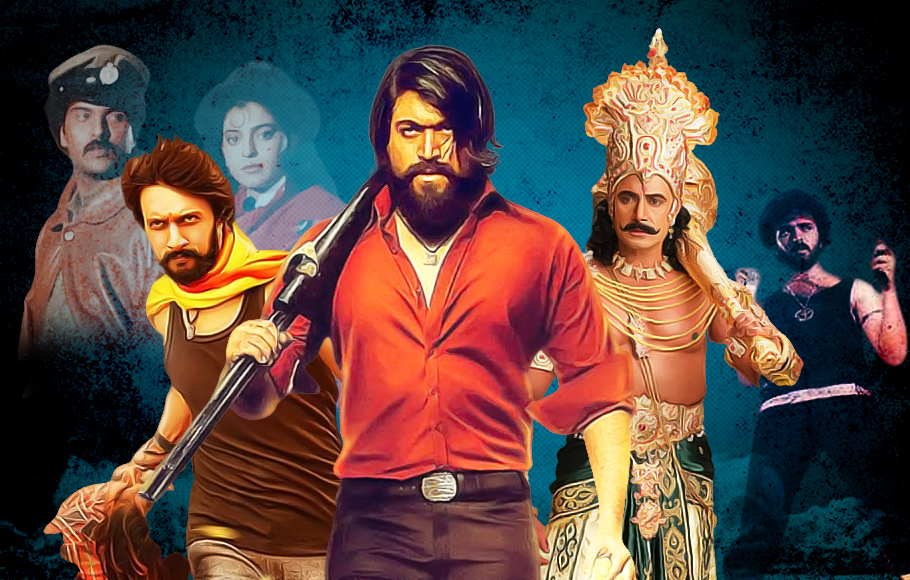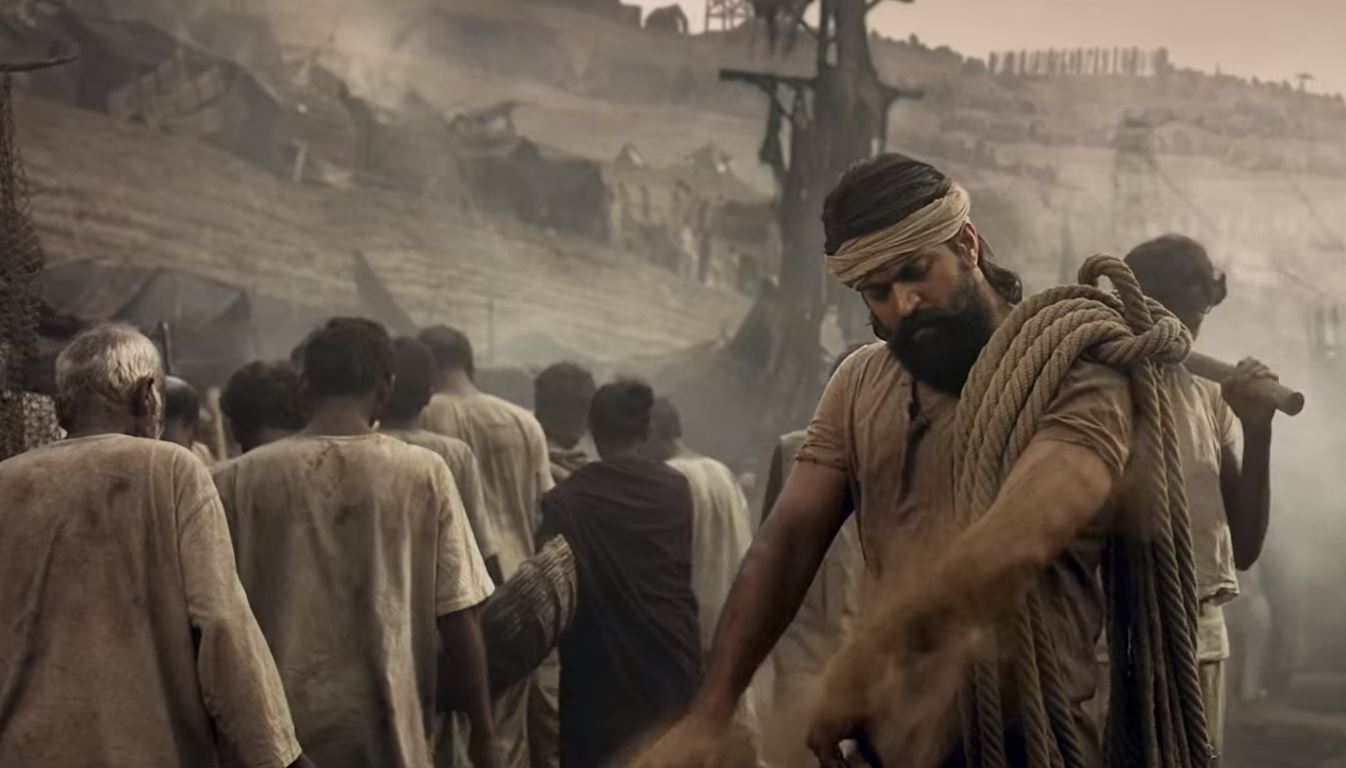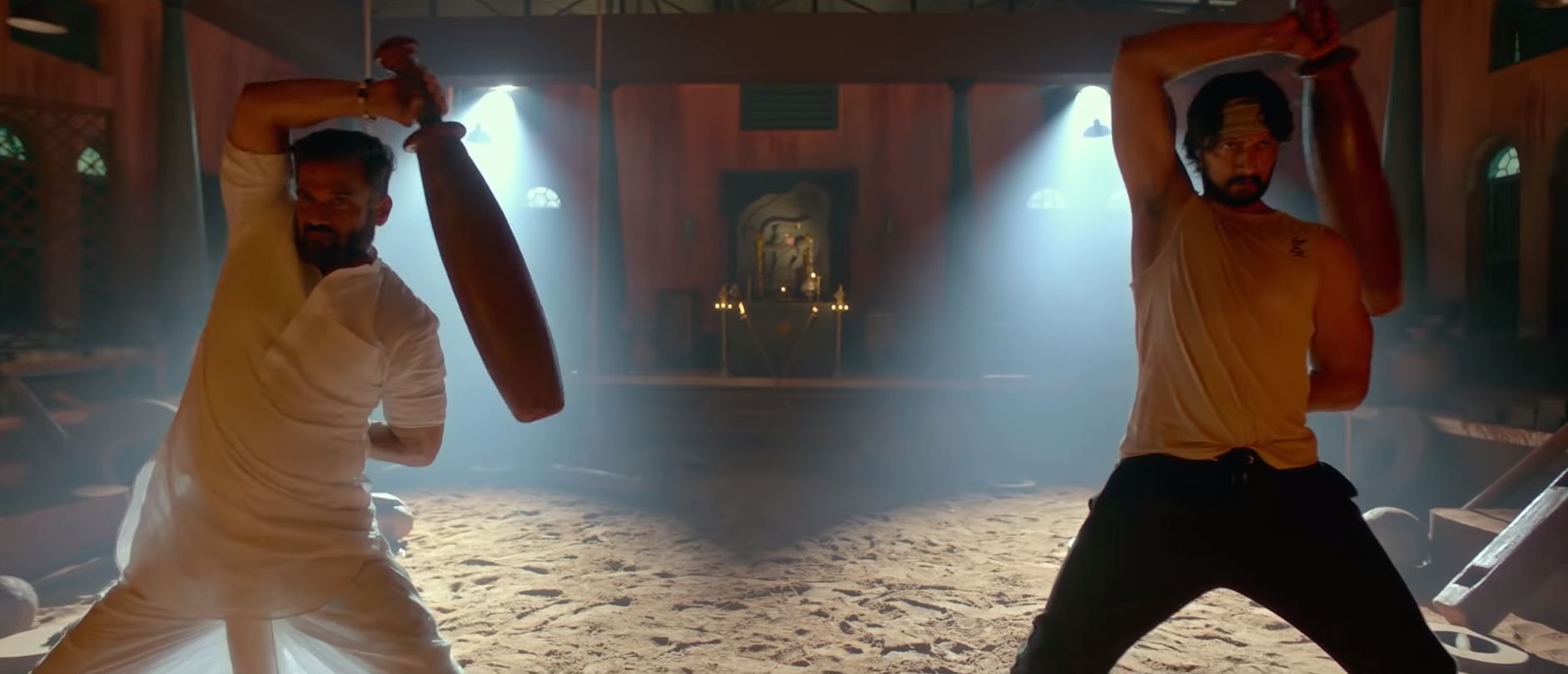
- Home
- News
- Analysis
- States
- Perspective
- Videos
- Education
- Entertainment
- Elections
- World Cup 2023
- Features
- Health
- Business
- Series
- Economy Series
- Earth Day
- Kashmir’s Frozen Turbulence
- India@75
- The legend of Ramjanmabhoomi
- Liberalisation@30
- How to tame a dragon
- Celebrating biodiversity
- Farm Matters
- 50 days of solitude
- Bringing Migrants Home
- Budget 2020
- Jharkhand Votes
- The Federal Investigates
- The Federal Impact
- Vanishing Sand
- Gandhi @ 150
- Andhra Today
- Field report
- Operation Gulmarg
- Pandemic @1 Mn in India
- The Federal Year-End
- The Zero Year
- Premium
- Science
- Brand studio
- Home
- NewsNews
- Analysis
- StatesStates
- PerspectivePerspective
- VideosVideos
- Entertainment
- ElectionsElections
- Sports
- Loading...
Sports - Features
- BusinessBusiness
- Premium
- Loading...
Premium

Is big budget alone enough to revive Kannada cinema?

The year 2018 was a landmark of sorts for the 85-year-old Kannada film industry, popularly known as Sandalwood. Yash-starrer ‘KGF: Chapter 1‘, made on a budget of ₹80 crore and was released last year, made history by becoming the first Kannada movie to mint over ₹200 crore worldwide, and to make ₹100 crore in Karnataka alone. Another highly-anticipated movie Kurukshetra,...
The year 2018 was a landmark of sorts for the 85-year-old Kannada film industry, popularly known as Sandalwood. Yash-starrer ‘KGF: Chapter 1‘, made on a budget of ₹80 crore and was released last year, made history by becoming the first Kannada movie to mint over ₹200 crore worldwide, and to make ₹100 crore in Karnataka alone.
Another highly-anticipated movie Kurukshetra, a mythological film based on Mahabharata, released this August is reportedly the most expensive film in the history of the industry. For the first time in its history, three big-budget movies produced at around ₹150 crore were released in the last year alone. But will this trend of making movies with massive budgets continue and what does it mean for the revival of Kannada cinema?
In an interview, actor Yash had said that big-budget films will help Kannada film industry flourish. “There was a time when Sandalwood’s highest budget was ₹10-15 crore, which has tripled now. When big-budget movies help the market grow, even the small-budget movies benefit from it. In a way, the trend will give us the courage to stay afloat even when other languages are doing well.”
Big budget over content?
Actor Chetan Kumar of Aa Dinagalu fame however feels that it does not really benefit the Kannada film industry.
While noting that big-budget films are good for producers, he told The Federal that such films often lack the thought and insight which a script/content-based movie brings.
“Although big-budget movies are successful, I am not sure how much are they contributing with respect to improving the artistic quality,” he says. “You can make a small budget movie and have better content and explore unusual subjects. And when such movies are successful, it leads to the growth of the industry, speaking from a creative standpoint. I feel big movies are all about the bragging rights and bankable stars.”
And he goes on to add that in terms of revenues, “we cannot compete with the Tamil industry anyway since their movies run on thousands of screens and also cater to the Tamil diaspora. “Of course, that doesn’t mean that big blockbuster movies are easy to make; they also take a lot of effort and there is a risk involved.”
Chetan feels that the need of the hour is to break commercial norms — wherein sex, violence and male characters are glorified — and remember that larger the film’s budget, one is more likely to bend to the diktats of commerce.

The ideal situation would be dabbling in fresh and new ideas with commerce backing it up because a well-made movie will always have takers although it needs to be marketed well (unless you are entirely relying on word of mouth publicity).
The closest example could be the 2016 blockbuster movie Kirik Party. Made on a budget of ₹4 crore, it was the highest-grossing Kannada movie that year, raking in a reported ₹40 crore at the box office, owing to its dream run not only in Karnataka but also overseas. Bell Bottom (2019) was made on a budget of ₹3.5 crore (including publicity) and collected about ₹15 crore.
Limited by language
One of the biggest challenges Kannada films face is that they don’t enjoy a large viewership. This, many believe, is because Kannadigas are inherently bilingual.
But despite that, a big-budget movie ensures that it reaches more theatres and has a better reach. For instance, KGF Chapter 1 was dubbed into 4 other languages, Hindi, Telugu, Malayalam and Tamil and received a very good response throughout. Of the ₹200 crore it grossed across the globe, nearly 35-40 percent is said to have come from other languages.
Cinematographer-turned-filmmaker S Krishna, who also wrote and directed the much-hyped Kannada film, Pailwan, says that he doesn’t know if the trend of big-budget films in Sandalwood is a good or bad thing, but he says “content is key and the presentation should be given topmost priority.”
Pailwan’s production cost is said to have crossed the ₹50-crore mark and was released in September.
“Our market is very tough and we cannot afford to lag behind. Remakes do not work here either because the chances are that the local audience would have already watched the original. It only works with the rural audiences in other parts of the country where they would not have watched the original movie in Kannada or another south Indian language (50-60% is a new audience if the film is remade in Bollywood),” he says.
According to him, fresh and appealing content along with a big name in the lead role (actor Sudeep) worked for Pailwan. He also feels that the audience related to the subject of an underprivileged person with talent.

Why big budgets alone won’t help
Entertainment journalist and Chitraloka editor KM Veeresh, who has also produced a movie in the past, feels that big-budget movies in Kannada work only as long as big names or stars are cast, as it stands true for any other industry, and leading names like Darshan or Sudeep only do one movie once in a year or two.
Big-budget movies are also not new to Kannada cinema, he says. “Remember movies by actor-producer Ravichandran like Premaloka (1987) and magnum opus Shanti Kranti (1991) (which were said to be produced at around ₹1 crore)? Even at that time, the kind of money he spent on his movies was unheard of.”
“Then there was producer Ramu, who was popularly called Koti (crore) Ramu because his movies were made in not less than ₹2 crore, back in those days. The market is only getting more competitive each passing day and we need to expand our market to the pan-India audience which is possible only if we keep up with others (dub our films in other languages and look at selling satellite rights),” Veeresh says.
He notes that a film can be considered a hit only when the producer recovers the money he/she has invested. “It doesn’t matter if the movie has run for 50 or 100 days. I know producers who have incurred losses despite the movie running for 100 days. There are other expenses you need to consider. While multiplexes have the revenue sharing model, in the case of single-screen theatres, you need to pay rent to the theater owners (which can go up to ₹4.5 lakh per week).”
Veeresh says that the number of movies being made in Kannada has increased in the last two years, but the success rate is only 8-10% and it was the same even 30 years ago.
Journalist and cine enthusiast Sridevi Iyengar feels that most of the recent big-budget Kannada films have been quite redundant.
“Big budget tag line along with the title seems to be the only USP the makers are aware of to bring the audience to the theatres. Most of these films, pumped with star power, have bland content. VFX seems to be the latest toy and is being included in films only to show that we have money and we can do it too. If you look at the last few films of our stars, the content is very old school and clichéd. The budget, over-the-top promotions, and even controversies haven’t succeeded in bringing the audience to the theatres,” she says.
Even if the audience is attracted by the lavishness or star cast, if the story/content is not good enough, the movie will definitely fall through, as in the case of Aamir Khan-Amitabh Bachchan starrer Bollywood film Thugs of Hindostan (2018).
Screen fight
Pailwan director Krishna says that the viewer today has multiple choices. “Though Kannada movie tickets are priced lower, thanks to subsidies from the state government, that is not enough to lure them. Today, they are also exposed to content on streaming apps.”
And with the OTT platforms, their expectations with respect to standards in storytelling have also changed, he says. “We need to work towards meeting that and upgrading that level via storytelling which is going to affect the budget indirectly.
However, the movie and Netflix audience are different. While films have to cater to everybody, the latter is watched individually.”

Karnataka Film Chamber of Commerce (KFCC) president DR Jayaraj points out a similar tussle between single and multiple screens, and the need for actors to do more films.
“Single screen theatres will suffer if we don’t come up with big movies. Multiplexes don’t depend on one movie alone, whereas single screens depend on them,” he says.
“The good thing is that the producers are ready to invest today. We have 5-6 leading actors in Kannada who are big names and we have requested them that they do at least two movies in a year,” he said, adding that the single screens are responsible for the fan following our regional actors enjoy
He recalls times when legendary actors like Rajkumar and Vishnuvardhan used to do more than three films a year. But today, the popular actors from the industry cannot give their undivided attention to movie projects alone since they are also involved in reality television shows like Bigg Boss Kannada and Kannadada Kotyadhipati (adaptation of Kaun Banega Crorepati).
“That is a drawback for us. But you cannot blame them because they are doing what works for them and for the other not-so-big names in the industry, these shows are the source of their livelihood.”
He also makes a reference to showman Ravichandran and how movies with lavish budgets were made earlier. “He was for Sandalwood what Raj Kapoor was for Hindi cinema. He invested in musical movies also. His other big-budget movie Ranadheera was liked by everyone.”
While Tamil and Telugu movies have a crucial overseas business in Malaysia, Singapore, Sri Lanka and Dubai, Kannada movies still have a long way to go before they can reach that kind of popularity.
Jayaraj notes that the highest number of films in India were made in Kannada last year, 243, and we can definitely expect more big-budget Kannada movies in the future.
Piracy problem
Another huge hurdle big-budget movies are facing is that of piracy. Producer Swapna lodged a complaint with cybercrime police a few days after Pailwan released, alleging that a pirated copy of the movie has been doing the rounds on the internet. The film’s team is said to have collected over 10,000 pirated links and handed it to the police. According to sources in the Kannada film industry, the piracy of Pailwan has led to a loss of anywhere between 10 and 20 crore. Even another big-budget movie this year, also Sandalwood’s first 3D mythological film Kurukshetra fell prey to piracy a week after its release.
If the evils of piracy are tackled head-on and Sandalwood focuses on bringing in fresh stories with commercial backing, the Kannada industry will not just manage to survive but will also continue to thrive in the cut-throat world of the movie business.

